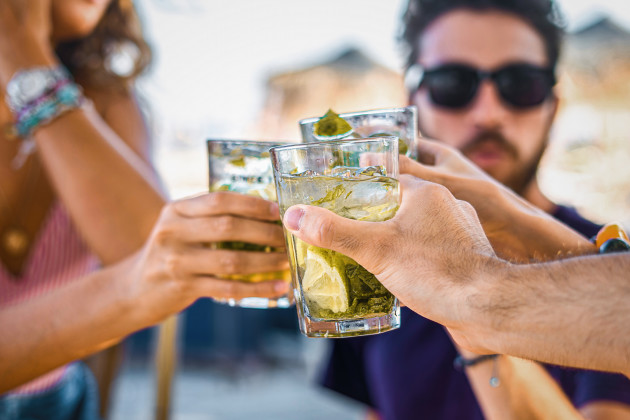
Low & no growth in the fast lane to 2026
Low & no drinks are set to accelerate over the coming years, the IWSR has revealed, with analysts predicting that consumption will increase by a third by 2026, exceeding earlier growth rates.
As we race towards January, a time of year traditionally for detoxing and cutting back, low & no is in focus once again. There is a marked difference this year, however. Low & no is now increasingly a year-round phenomenon, as consumers become motivated to drink lower alcohol drinks weekly or even daily and because of ‘lifestyle, rather than necessity’.
New figures from the IWSR show just how quickly the category is growing – and will continue to grow. Low & no beer/cider, wine, spirits and RTDs surpassed $11bn in 2022 (+7% in volume) across the top 10 key markets globally, which together, account for the lion’s share of sales.
The pace of growth of the category is expected to accelerate, too. According to the IWSR, volumes are forecasted to reach a CAGR of 7% between 2022 and 2026 worldwide, compared to +5% between 2018 and 2022. Interestingly, it is zero alcohol – driven by beer and spirits – as opposed to low alcohol – driven by wine and beer, which is again spearheading growth, and is expected to account for over 90% of the total category volume growth in the world’s key markets going forwards.
“This pattern of avoiding alcohol on certain occasions or altogether is driving no over low alcohol growth,” said Susie Goldspink, head of no and low alcohol at the IWSR. “Pair this with the rise of functional beverages – often containing ‘mood-enhancing’ adaptogens or nootropics – and the result is a strong outlook for no-alcohol.”
The IWSR also noted the rise of a ‘maturing consumer base’ for no & low, thanks to growth among millennials.
Now the largest age group for the category, millennials are normalising the switching between alcohol and low & no, both during the same drinking occasion and different ones. Across age groups, 78% of consumers of low & no products also drink full-strength alcohol.
The IWSR counts the UK among the world’s most valuable low & no alcohol markets, alongside Germany (the most valuable), Japan, Spain and the US. However, it will still take a long time before the category becomes ‘mainstream’.
Despite the rapid uplift, the category accounts for just 2% of total beverage alcohol sales globally, worth $11bn in 2022. According to CGA, the low & no category accounts for a small proportion of the alcoholic drinks sales in the on-trade (0.4%). Yet, the figure has grown significantly over the past three years, and is now worth a total of £26.9m in the UK, up by 57.2% since 2019.
There was certainly a major upswing in low & no visibility, last year. London now has its own mindful drinking Mecca in Club Soda’s new Low & No Tasting Room – a first of its kind retailer in the UK, which opened in Covent Garden in November, offering 150 brands from wine to beer and premixed cocktails. As we go forwards, the drinks industry seems to have only scratched the surface of low & no.
For the full picture of low & no, and its road to becoming a fully realised drinks category, be sure to read the January edition of Harpers.
Keywords:
- growth
- time
- january
- low
- Rates
- towards
- earlier
- cutting
- race
- detoxing
- year traditionally
- towards january
- race towards
- earlier growth
- growth rates
- new predictions putting
- predictions putting consumption
- exceeding earlier growth
- earlier growth rates
- race towards january




